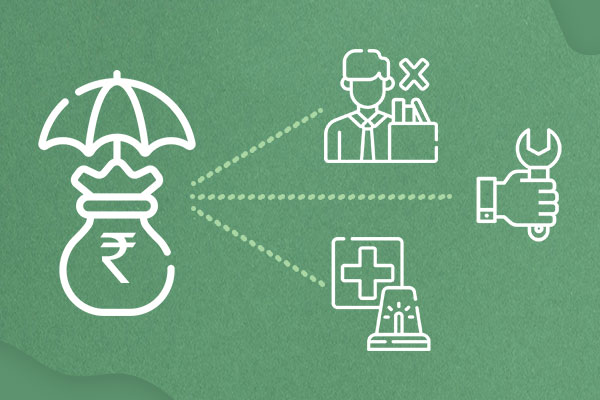Emergency Fund Guide: How to Prepare for Unexpected Expenses

No one can gauge a sudden expense like a medical emergency, home repair, or job loss. While it may come as a surprise, one must always be prepared to meet such costs with sufficient cash. It is essential to have an emergency fund that helps soften the blow of such expenses. An emergency fund is a savings account or a financial safety net set aside precisely for unexpected expenses and enables you to get through even the most complex financial situation. This fund is to be used to meet those unexpected expenditures and only for those; it is better not to dip into this fund to meet expenses like watching movies or shopping. . Financial advisors recommend having a fund covering six to eight months’ expenses.
Benefits of an Emergency Fund
Before we dive into setting up an emergency fund, let us understand what the benefits of having such a fund are, in the first place:
- Prevent accumulation of debt: When faced with an unprepared situation, terms like loan and overdraft may seem like the solution. However, with an emergency fund in hand, one can avoid unnecessary debt.
- Helps save for the future: As the fund remains unused unless it is for a specific purpose, it acts as an investment for the future and becomes a part of the retirement fund.
- Removes the element of surprise: It is difficult to pay for an emergency because of its uncertainty. But this fund caters to such unforeseen events and ensures you are always prepared.
Wondering how to build such a fund? Here are a few suggestions that can get you started
1. Use the 50:30:20 rule for monthly salary to build your emergency fund
The 50/30/20 is a simple budgeting rule that can be used to manage money more effectively. This rule divides income into three spending categories – 50% needs, 30% wants, and 20% savings. Needs are everything from paying rent, groceries, and phone bills. 30% includes social expenses, shopping, and travel. The balance of 20% goes towards savings. By creating these three categories, one can ensure a portion of the income is always saved for the future.
2. Create a mutual fund investment with an IDCW option that acts as a passive income
Investing in a mutual fund that has high liquidity can be one of the ways to build an emergency fund. Liquid funds are a great choice for such a purpose as they offer a higher rate of return than fixed deposits which has a lock-in period. A type of mutual fund, liquid funds usually have a residual maturity of up to 91 days. You can also choose the IDCW option to increase the investment without adding fresh money to the fund.
3. Get health insurance to cover accidents or sudden medical needs
Accumulating a medical bill can put you in a difficult financial situation. You can overcome such expenses by taking health insurance that will cover those expenses. Health insurance usually covers accidents, sudden hospitalisation, surgeries, etc. This type of insurance is designed to protect the insured from having to spend directly from their pockets.
4. Open a savings account and set up an automatic transfer
Have a savings account dedicated to your emergency fund. The simplest way to prepare for an emergency fund is by automating the process. Instead of manually transferring every month, set up standing instructions to automatically transfer a portion of your income to this account. This way, you are protected for the future and have only the amount needed to spend for that month’s expenses in your checking account. The savings account also acts as a source of income, as banks offer a good rate of interest for these accounts.
5. Avoid dipping into the fund unless it is an emergency
Now that you have a savings account, it is important to be mindful of its purpose. Do not dip into this account unless it is an absolute emergency. While it may seem like this is extra liquid cash, it serves a much higher purpose and cannot be deferred from it. Instead of splurging the money, resist the urge and reinvest the surplus from your emergency fund into other liquid assets.
6. Invest in a flexible fixed deposit that allows you to break without penalty
An emergency fund means quick cash when needed. With the power of compounding, one can increase emergency funds effortlessly. However, fixed deposits, which have one of the highest returns, have several time constraints. It is also for this reason many choose to have emergency funds in a highly liquid option. To remedy this situation, there are new fixed deposits, namely flexible fixed deposits, that have been introduced by banks. These FDs offer a higher return to a regular savings account while being highly liquid. Although there is a maturity period, one can break and use the amount locked in without penalty. RBL Bank offers Flexi Sure Fixed Deposit at higher interest rate. Linked to the savings or current account, deficits in these accounts can be easily taken care of by breaking the deposit.
The future is uncertain and expensive. Having an emergency fund is a great way to secure your future while also ensuring your loved ones are not under financial pressure. It removes the stress of planning at the last minute while managing your current lifestyle. A little planning can take you a long way.

 Blog
Blog Blog
Blog



Comments
No comments yet.